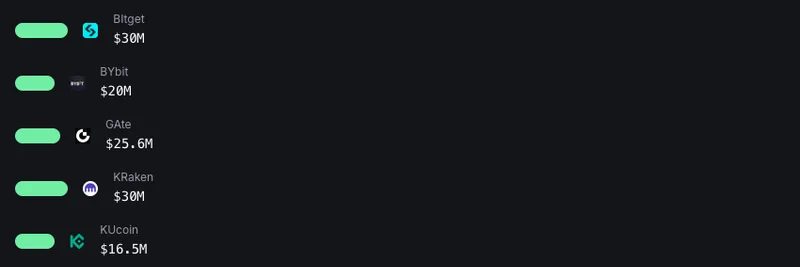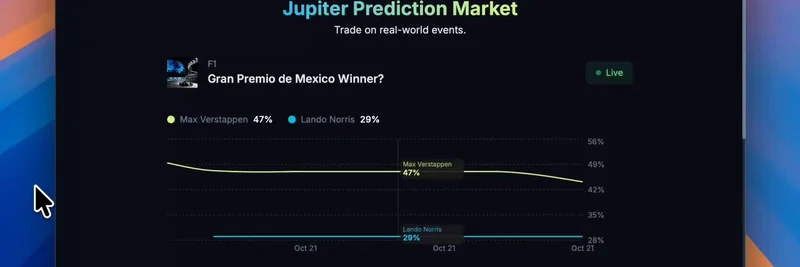Hey there, meme token hunters and blockchain buffs! If you're plugged into the crypto scene on X (formerly Twitter), you probably spotted this intriguing post from BSC News. They're calling it the "ULTIMATE GUIDE" to $WLFI, the token behind the much-talked-about World Liberty Financial project. With a link to their in-depth analysis, it's sparking conversations everywhere. But what's the real deal with @worldlibertyfi? Let's break it down in simple terms, explore why it's generating buzz, and see how it fits into the wild world of meme tokens.
What Exactly is World Liberty Financial ($WLFI)?
World Liberty Financial, or WLFI for short, isn't your average meme coin—it's a full-fledged DeFi (decentralized finance) protocol aiming to blend traditional finance with blockchain magic. Launched in late 2024, it's got some high-profile backing from the Trump family, which adds a layer of political flair and meme-worthy drama. At its core, WLFI revolves around the USD1 stablecoin, a digital dollar pegged 1:1 to the real USD and backed by safe assets like U.S. Treasuries and cash.
Think of it as a bridge: It lets everyday users dip into DeFi without the wild price swings of typical cryptos. Since its stablecoin went live in April 2025, USD1 has ballooned to a $2.65 billion market cap, ranking it as the sixth-biggest stablecoin out there. The project has raked in over $550 million through token sales, showing serious investor interest. It's built on solid tech foundations, using tools like Aave for lending and Chainlink for seamless cross-chain moves across Ethereum, BNB Chain, and Solana.
How Does WLFI Work? A Step-by-Step Breakdown
If you're new to DeFi, don't sweat it—WLFI keeps things relatively straightforward. Here's the gist:
The USD1 Stablecoin: This is the star of the show. You can use it for stable transfers, trading on exchanges like Gemini, or bridging across chains via tools like Transporter.io. It's all about reliability in a volatile market.
The WLFI App (Coming Soon): Imagine a user-friendly dashboard where you connect your wallet or bank account to deposit fiat or crypto. It'll offer portfolio tracking, real-time stats, and easy access to liquidity—perfect for beginners.
Lending Features: Powered by Aave V3, users can put up collateral (like crypto assets) and borrow against it. Interest rates adjust dynamically, and there's a "health factor" to keep things safe and prevent liquidations.
Governance with $WLFI Token: Holders of the $WLFI token get a say in the project's future. You can propose ideas on forums, vote via Snapshot, and influence decisions. There's a clever 5% voting cap per wallet to prevent any one person (or family) from dominating, though the Trump crew holds a big chunk.
The token launched on September 1, 2025, and is available on major exchanges like Binance, Uniswap, and PancakeSwap. Cross-chain bridging kicked off on September 10, adding more flexibility. Oh, and they've already burned some tokens and blacklisted suspicious wallets for security—standard stuff in crypto, but it stirred some controversy.
Tokenomics: The Numbers Behind $WLFI
Tokenomics is just a fancy word for how a token's supply, distribution, and utility are structured. For $WLFI:
Total Supply: 100 billion tokens—governance-only, no fancy yields or staking rewards here.
Circulating Supply at Launch: About 24.7%, with chunks allocated for liquidity and treasury to keep markets stable.
Trump Family Holdings: They control 22.5 billion tokens (22.5%) through a company called DT Marks DEFI LLC, and they're entitled to 75% of net revenues. That's a big slice!
Unlocks and Burns: Early investors got 20% in September 2025, with team tokens locked until community votes. They've burned 47 million tokens already, and there's talk of using fees for buybacks and more burns.
All governance votes so far? Unanimous. Impressive, but it raises eyebrows about true decentralization.
Who's Behind the Curtain? The Team
The Trump connection is what makes WLFI stand out—and meme-able. Donald J. Trump is the "chief crypto advocate," though he's stepped back since his 2025 inauguration. His sons, Donald Jr. and Eric, are co-founders, and Barron Trump is dubbed the "DeFi visionary." Co-founder Zak Folkman handles a lot of the day-to-day.
The full team is listed on their official site, but the family's involvement has drawn both fans and critics. Partnerships with big names like Tron (shoutout to Justin Sun), Chainlink, and Aave add credibility.
Risks and Red Flags: Proceed with Caution
No crypto project is without pitfalls, and WLFI has its share:
Centralization Concerns: That massive Trump family stake and revenue cut flies in the face of DeFi's "decentralized" ethos. Even with voting caps, influence could be outsized.
Security Issues: Code similarities to a hacked project (Dough Finance), anonymous domain registrations, and wallet blacklists (including Justin Sun's, worth $107 million) have sparked "scam" accusations.
Regulatory Heat: With revenue-sharing, the SEC might classify $WLFI as a security. Plus, the political ties could invite extra scrutiny.
Other Drama: Hijacked social accounts promoting fakes, team overlaps with past projects—it's got that classic crypto volatility.
Always DYOR (do your own research) before diving in.
Why WLFI Matters in the Meme Token World
Sure, WLFI positions itself as serious DeFi, but let's be real—the Trump branding screams meme potential. In a space where tokens like $DOGE skyrocketed on hype alone, $WLFI's political edge could fuel viral moments, especially with over 773,000 followers on X. It's not a pure meme coin, but the drama, family ties, and "America-first" vibe make it a conversation starter.
Compared to stalwarts like USDT or Aave, WLFI brings a unique mix of stability and spectacle. Future plans include loyalty programs, more exchange listings, and even a public company structure for holdings. If it delivers on lending and expansion, it could shake up the meme-DeFi crossover.
If this piques your interest, check out the full BSC News guide for even more details. What's your take on $WLFI—meme gold or risky business? Drop your thoughts in the comments below, and stay tuned to Meme Insider for more on the latest token trends!




